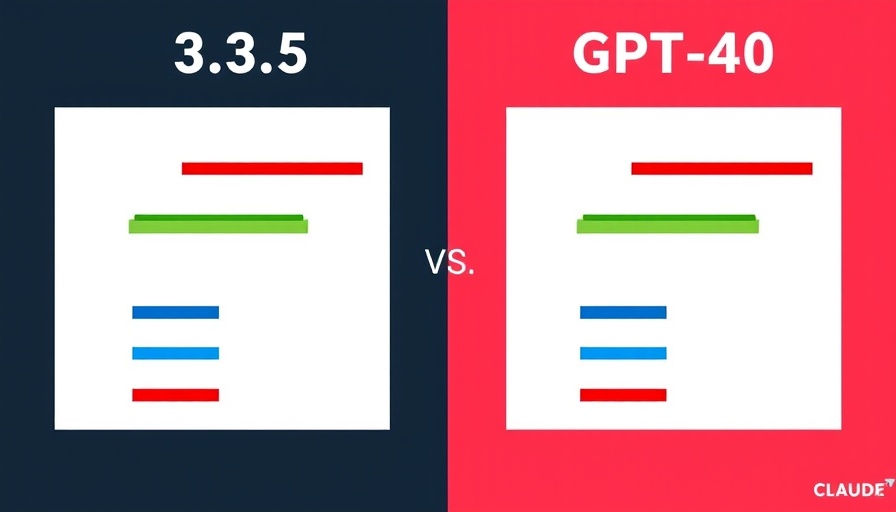
Understanding Claude 3.5 vs GPT-4o: The New Era of AI Models
An ongoing debate among AI enthusiasts revolves around the performance of ChatGPT models, particularly Claude 3.5 Sonnet and OpenAI's GPT-4o. As companies race to build the most advanced AI tools, understanding each model's strengths and weaknesses is crucial. While Claude 3.5 Sonnet has captured attention for its structured thinking and safer responses, GPT-4o is heralded for its speed and efficiency.
Key Features of Claude 3.5 Sonnet
Claude 3.5 Sonnet distinguishes itself with several notable features. With a context window of over 200,000 tokens, users can conduct deep analyses and generate more extensive text than ever before. This allows for intricate conversational exchanges and complex task executions.
Moreover, its cost-effectiveness is noteworthy. According to reports, Claude 3.5 is about 40% less expensive than GPT-4o, potentially attracting users sensitive to operational costs in AI usage.
The Speed and Versatility of GPT-4o
While Claude emphasizes thorough responses, GPT-4o shines in its ability to generate outputs quickly, making it more suitable for tasks requiring speed. This model, with a context of 128,000 tokens, lends itself well to coding applications and dynamic, interactive content generation. Users needing rapid responses will appreciate GPT-4o's efficiency, especially when handling multiple queries in a single interaction.
Comparative Analysis: Speed vs Depth
In direct comparisons, it's evident that both AI models have their own set of advantages. Claude's structured and safe approach often results in more human-like interactions, albeit at the cost of speed. Users report that it frequently delivers nuanced outputs that better replicate human conversations, making it an excellent choice for applications that prioritize interaction quality over speed.
On the other hand, GPT-4o maintains a reputation for delivering superior performance in scenarios where task completion speed matters. Users might favor its swift responses during high-stakes situations where timely information is critical.
Real-World Applications and Use-Cases
Real-world applications of these models extend beyond casual usage to professional and commercial spheres. For instance, financial analysts and traders have engaged both models to automate routine decisions and streamline their operations. Claude 3.5 Sonnet has been observed producing highly accurate complex portfolio configurations, outperforming GPT-4o in this specific task.
Nonetheless, the choice of model largely depends on individual use cases. Those looking for fast responses to routine queries may prefer GPT-4o, while those craving a more thoughtful interaction will gravitate towards Claude 3.5.
Cost-Effectiveness: Claude’s Competitive Edge
Financial implications play a pivotal role in organizational decisions concerning AI utilization. Notably, Claude 3.5 offers an economic advantage over GPT-4o, as seen through various performance benchmarks. The lower operational costs paired with its deep analysis capabilities position it as an attractive option for businesses looking to maximize their return on AI investment.
Future Predictions: The Path Forward for AI Models
As competition in the AI landscape intensifies, it is highly advisable to closely monitor the advancements made by both Anthropic and OpenAI. Innovations in processing speed, model capabilities, and user experience are likely to emerge, reshaping numerous sectors. The ongoing development of AI models will foster greater efficiencies and promote the creation of tools that are more aligned with user needs.
In conclusion, whether opting for Claude 3.5 Sonnet or GPT-4o, understanding their strengths will empower users to enhance their engagements in a rapidly evolving digital landscape. As the AI community progresses, both models will surely influence and inspire future iterations of artificial intelligence.
 Add Row
Add Row  Add
Add 




 Add Row
Add Row  Add
Add 

Write A Comment